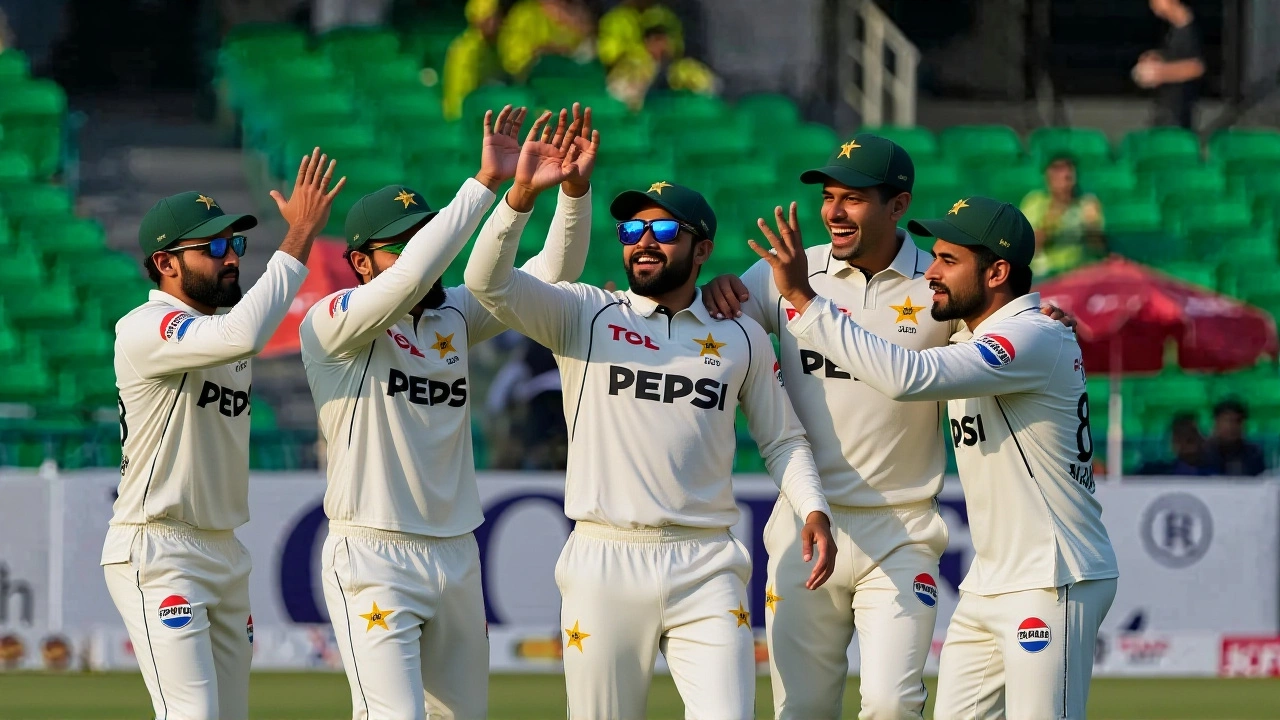
When Pakistan cricket team clinched a 1‑0 series win over South Africa cricket team at Wanderers Stadium on 14 October 2025, the official World Test Championship global rankings underwent a sudden reshuffle. The shift, overseen by Geoff Allardice, CEO of the International Cricket Council, thrust Australia cricket team to the top of the percentage‑based table, while India cricket team fell to second despite holding the highest total points. The drama unfolded just days after Chris Tetley, ICC Tournament Director, reminded the media that the championship’s formula rewards consistency over raw point accumulation.
Historical Context: Why the Percentage System Exists
The International Cricket Council introduced the win‑percentage model for the 2025‑2027 edition to address the uneven number of matches each side plays. As Wasim Khan, ICC Head of Cricket, explained at the launch press conference at Lord's Cricket Ground on 28 May 2025, “With series ranging from two to five Tests, raw points would unfairly favor teams with longer tours.”
Since the inaugural 2019‑2021 cycle, the championship has featured 27 bilateral series, totalling 71 Tests. Teams play three home and three away series, but the length of each series varies, meaning some nations contest up to 15 Tests while others play fewer than ten. The percentage system levels the field, but it also creates moments where a single win—like Pakistan’s—can swing the leaderboard dramatically.
Current Standings: Numbers That Tell the Story
As of 16 October 2025, the table looks like this:
- Australia: 3 matches, 3 wins – 36 points from 36 possible (100.00% win %)
- India: 7 matches, 4 wins, 2 losses, 1 draw – 52 points from 84 possible (61.90% win %)
- Pakistan: 1 match, 1 win – 12 points from 12 possible (100.00% win %, ranked lower due to fewer matches)
- England: 5 matches, 2 wins, 2 losses, 1 draw – 26 points from 60 possible (43.33% win %)
- Sri Lanka: 2 matches, 1 win, 1 draw – 16 points from 24 possible (66.67% win %)
Notice how India, despite amassing the highest raw total (52 points), trails Australia because the latter’s perfect win‑percentage outranks raw points under the current rules. The tiebreaker hierarchy—first series wins, then away‑win percentage, then ICC Test Rankings—means Pakistan’s solitary win can’t eclipse Australia’s three‑match sweep.
Reactions from the Cricketing World
“It’s a harsh reminder that you can’t afford a slip‑up,” said S Rajesh, senior statistician at ESPNcricinfo, in an interview on 15 October 2025. “India’s early dominance masked the fact that a few losses now cost them dearly in percentage terms.”
Pakistan’s captain, Babar Azam, expressed cautious optimism: “Winning in Johannesburg boosts our confidence, but we know the road ahead is long. Every match now carries extra weight.”
Australian bowler Pat Cummins was pragmatic: “We’ve done the work, but the championship is a marathon. Keeping the 100 % streak is tough, especially when we travel to South Africa in December.”
Impact on Upcoming Fixtures and the Road to Lord’s
India’s five‑Test series against England begins on 1 November 2025 at Edgbaston Cricket Ground in Birmingham. A clean sweep would lift India’s win‑percentage back into contention, but a single draw would keep them trailing.
Australia, meanwhile, faces a three‑Test series against South Africa starting 17 December 2025 at Melbourne Cricket Ground. The hosts are ranked low, giving Australia a realistic chance to preserve its perfect record.
If either side falters, the other could seize the top spot, setting up a potential India‑Australia showdown at the June 2027 final at Lord's Cricket Ground. That would echo the 2023 edition, where a tightly contested table produced a dramatic finale.
Broader Implications: What This Means for the Championship’s Credibility
The current episode has reignited debate about the championship’s format. Critics argue that a single‑match win shouldn’t eclipse a team that has played many more games, while supporters contend that the percentage system preserves fairness across disparate schedules.
Former player‑turned‑analyst Mike Atherton weighed in: “The percentage model captures the spirit of ‘quality over quantity.’ Yet, fans often gravitate to raw points because they’re easier to understand. The ICC may need to improve public communication around the tiebreakers.”
Regardless of the discourse, the recalibration underscores how every over, every point, and every over‑rate penalty can shift the balance in a competition that spans two years and continents.
Frequently Asked Questions
Why does Australia lead the standings despite playing fewer matches than India?
The ICC’s win‑percentage system divides points earned by points available, not by total points. Australia’s three wins out of three matches give it a 100 % win rate, which outranks India’s 61.90 % despite India’s larger point haul.
How many points does a team earn for a drawn Test?
Each side receives four points for a draw, as stipulated in the tournament regulations released by the ICC in June 2025.
What are the tiebreaker rules if teams share the same win percentage?
First, the number of series wins is considered, followed by away‑match win percentage, and finally the ICC Test Team Rankings as of 30 June 2027.
When and where will the championship final be held?
The final is scheduled for June 2027 at Lord's Cricket Ground in London, England.
How might India's upcoming series against England affect the standings?
A clean sweep would boost India’s win percentage above 80 %, potentially reclaiming the top spot. Conversely, a single draw or loss would keep Australia ahead and increase pressure on India for the remainder of the league.


